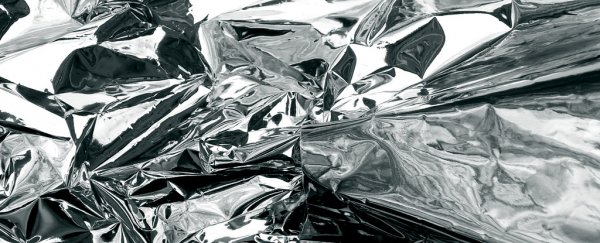Aluminium is already highly prized. It's conductive, has a low melting point, is very strong when alloyed, is impervious to rust and, above all, it's extremely light.
But what if you could get it lighter - so light, in fact, that it could float on water even when not made into the shape of a foil boat?
According to a model created by researchers at Utah State University and Southern Federal University in Rostov-on Don, Russia, such a thing is actually possible. A team used computational design to conceive a form of crystalline aluminium with extremely low density.
"My colleagues' approach to this challenge was very innovative," said USU chemist and researcher Alexander Boldyrev.
"They started with a known crystal lattice, in this case, a diamond, and substituted every carbon atom with an aluminium tetrahedron."
The resulting crystalline aluminium, called supertetrahedral aluminium, has an incredible density of just 0.61 grams per cubic centimetre, compared to the density of normal aluminium, which is 2.7 grams per cubic centimetre. Steel, by comparison, has a density of 7.75g/ccm.
This means that a lump of the semimetal would float on water, which has a density of 1g/ccm, where a lump of ordinary aluminium would sink to the bottom.
But the potential applications go far beyond simply floating on water, as useful as that is.
"Spaceflight, medicine, wiring and more lightweight, more fuel-efficient automotive parts are some applications that come to mind," Boldyrev said.
Spaceflight would be important because every kilogram added to a rocket's payload increases the cost and difficulty of launching.
But he also advised that, while it would be inexpensive to produce and indicates high plasticity, the team hasn't actually manufactured any yet - until they do so, there's still a lot to learn about it.
"It's very early to speculate about how this material could be used. There are many unknowns. For one thing, we don't know anything about its strength," he said.
However, the design is a first step to seeing a new material realised. And we know from previous research that supertetrahedral materials can be synthesised. The next step is to try to produce supertetrahedral aluminium so it can be examined more closely.
"An amazing aspect of this research is the approach: using a known structure to design a new material. This approach paves the way for future discoveries," Boldyrev said.
The research has been peer-reviewed and published in The Journal of Physical Chemistry C.
